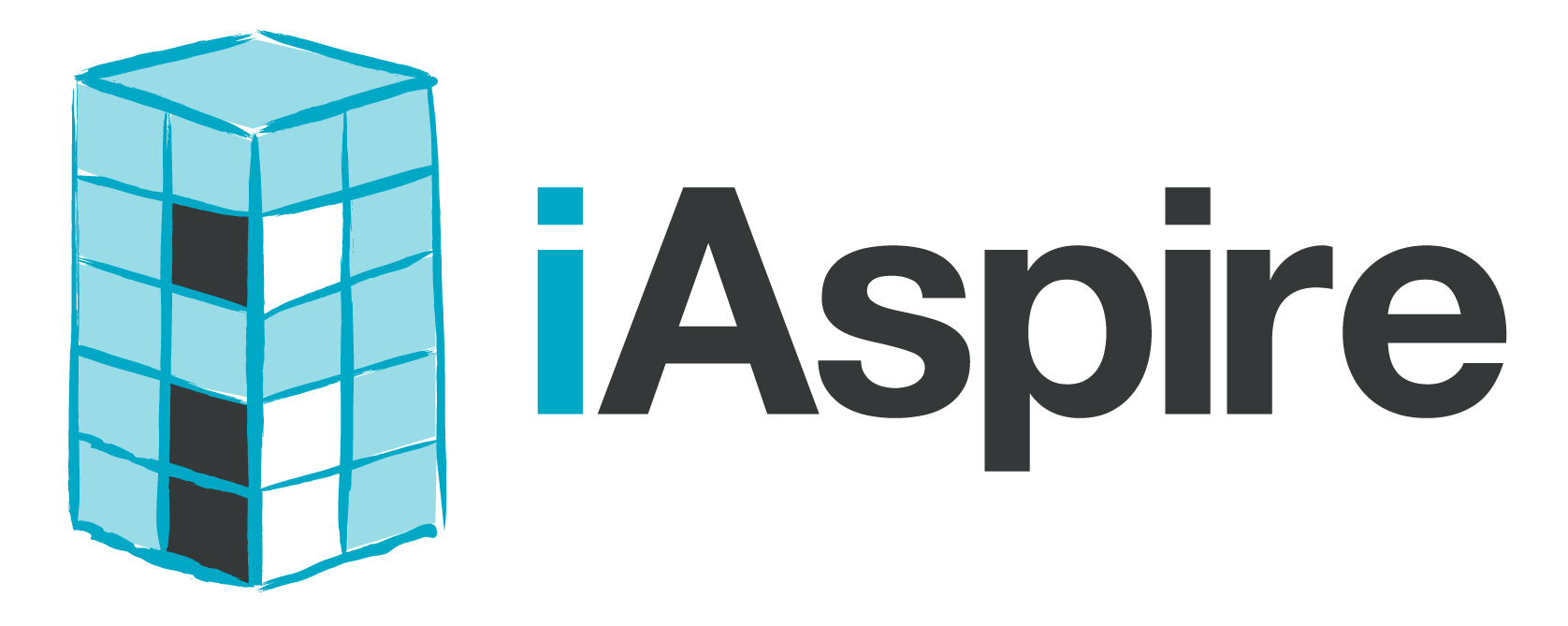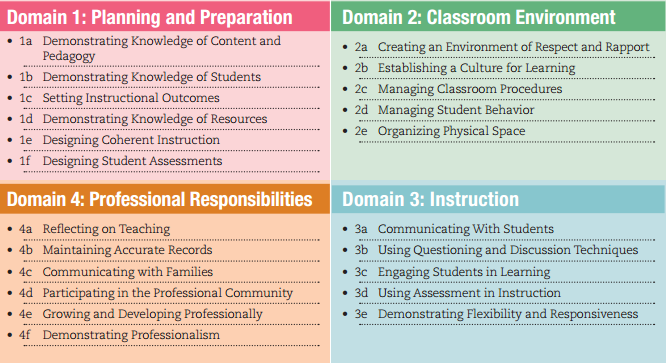Charlotte Danielson's Framework for Teaching
The Danielson Framework for Teaching is one of the most widely adopted comprehensive approaches to teacher professional learning throughout the world. This is certainly true for our customer base in iAspire education as well.
Originally developed in 1996, the Danielson Framework has evolved to reflect new learning and important shifts in education. Despite the evolution, its purpose remains the same: to capture great teaching in all of its complexity.
After more than 20 years of use and research, Charlotte Danielson took the original framework’s 4 domains and 22 components and also synthesized them into 6 clusters and 6 common themes. Why did she do this? Utilizing all three elements of the Danielson model ensures accurate identification of teaching indicators, impactful conversations among educators, and alignment to the core values of the school system.
We’ve compiled the Danielson framework, clusters, and common themes below for your quick reference and understanding.
The Danielson Framework breaks down teaching activities into 22 components, organized into four domains of teaching responsibility:
Domain 1: Planning and Preparation
The components in Domain 1 outline how a teacher organizes the content of what students are expected to learn---in other words, how the teacher designs instruction. These include the following indicators:
Demonstrating knowledge of content and pedagogy
Demonstrating knowledge of students
Setting instructional outcomes
Demonstrating knowledge of resources
Designing coherent instruction
Designing student assessments
Domain 2: Classroom Environment
The components in Domain 2 consist of the interactions that occur in a classroom that are non-instructional. These include the following indicators:
Creating an environment of respect and rapport
Establishing a culture for learning
Managing classroom procedures
Managing student behavior
Organizing physical space
Domain 3: Instruction
The components in Domain 3 are what constitute the core of teaching – the engagement of students in the learning context. These include the following indicators:
Communicating with students
Using questioning and discussion techniques
Engaging students in learning
Using assessment in instruction
Demonstrating flexibility and responsiveness
Domain 4: Professional Responsibilities
The components in Domain 4 represent the wide range of a teacher’s responsibilities outside the classroom. These include the following indicators:
Reflecting on teaching
Maintaining accurate records
Communicating with families
Participating in the professional community
Growing professionally
Showing professionalism
The intent for the framework clusters was to pull the big ideas from the 22 framework components and improve the quality of focused conversations for professional growth and development among teachers, administrators, and instructional coaches.
The 6 Danielson Framework Clusters to support teacher growth and student learning now include:
CLUSTER 1 - Clarity of Instructional Purpose and Accuracy of Content
Learning Outcomes
Success Criteria & Activities
Presentation & Explanation
CLUSTER 2 - A Safe, Respectful, Supportive, and Challenging Learning Environment
Caring & Respect
Intellectual Challenge
Support & Persistence
CLUSTER 3 - Classroom Management
Routines & Procedures
Collective Responsibility
Physical Environment
CLUSTER 4 - Student Intellectual Engagement
Lesson Structure & Flow
Important Learning
Student Discourse
CLUSTER 5 - Successful Learning by All Students
Assessment
Feedback to Students
Analysis & Reflection
CLUSTER 6 - Professionalism
Continuous Professional Learning
Collaboration
Honesty & Integrity
The intent for the common themes was to help educators “see the forest from the trees” - that is, to extract the core essence or values of what the framework and clusters identify from the teaching experience.
The 6 Danielson Framework Common Themes now include:
Equity - Every student deserves access to world-class teaching and learning environments.
Cultural Competence - Every student deserves a learning environment that fosters a sense of belonging and a voice to diverse points of view.
High Expectations - Every student deserves access to rigorous content to help them learn and grow.
Developmental Appropriateness - Every student deserves teachers who understand the cognitive and social-emotional development for their age group.
Attention to Individual Students - Every student deserves a learning environment that challenges students at different levels and with different needs.
Student Assumption of Responsibility - Every student deserves to be empowered to assume responsibility for their own learning
As the innovative technology leader for growth and development in education, iAspire is continuously tuning the observable indicators for evolving frameworks like the Danielson Framework. In fact, the Danielson Framework is one of the six predominant frameworks in the iAspire canon of teaching DNA. The other five frameworks include the following: Marzano Focused Teacher Evaluation Model, Stronge Teacher and Leader Effectiveness System, McRel Personnel Evaluation, Marshall Teacher Evaluation Rubrics, and the 5 Dimensions of Teaching and Learning Framework. iAspire also fills in the gaps of each of the aforementioned frameworks with our master teaching DNA list of indicators, so educational leaders can have confidence they’re capturing what really matters. This is what equips iAspire to deliver the impactful development experiences teachers and administrators expect and that students deserve.


